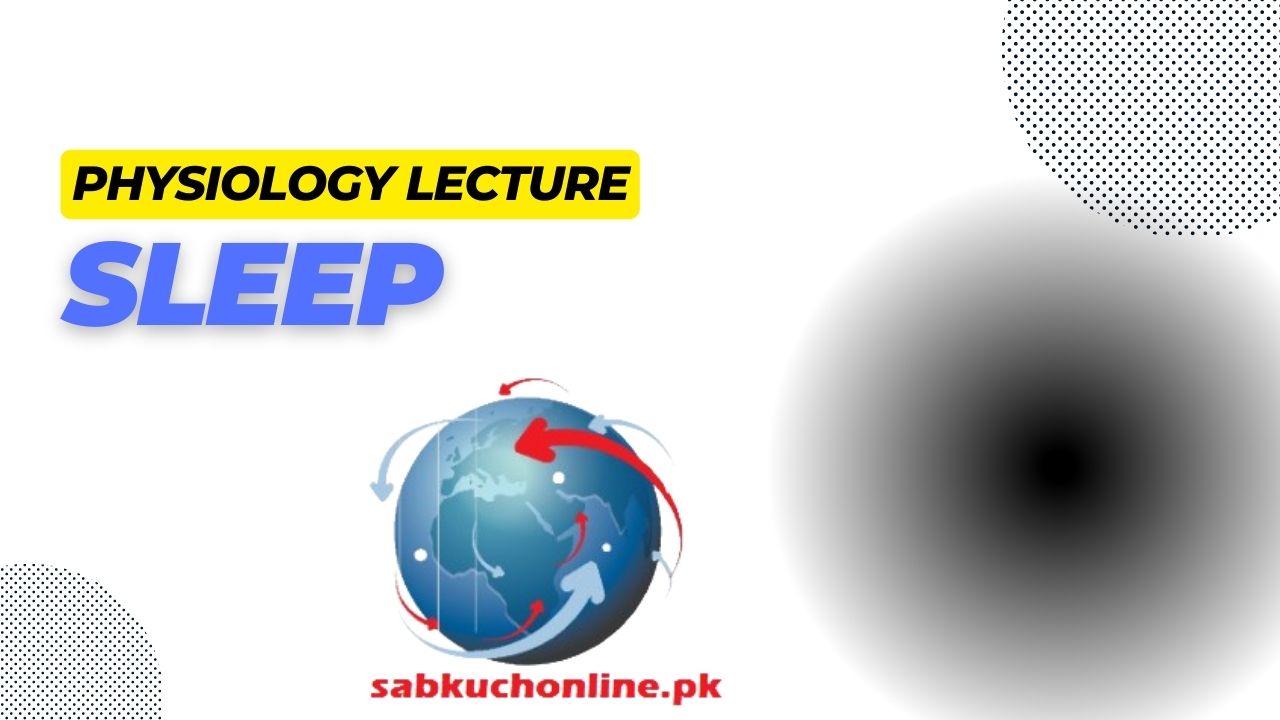DEFINITIONS:
- Sleep: A state of loss of consciousness from which a subject can be
aroused by appropriate stimuli. - Coma: A state of unconsciousness from which a subject cannot be
aroused.
TYPES OF SLEEP:
During each night, a person goes through stages of two types of sleep
that alternate with each other.
(1) Slow-wave sleep, in which the brain waves are strong and of low
frequency and
(2) Rapid eye movement sleep (REM sleep), in which the eyes undergo
rapid movements despite the fact that the person is still asleep.
- Most sleep during each night is of the slow-wave variety(deep, restful
sleep) that the person experiences during the first hour of sleep after
having been awake for many hours. - REM sleep, on the other hand, occurs in episodes that occupy about
25 percent of the sleep time in young adults; each episode normally
recurs about every 90 minutes for 5 to 30 minutes. This type of sleep
is not so restful.

- When the person is extremely sleepy, each bout of REM sleep is short and may even be
absent. - Conversely, as the person becomes more rested through the night, the durations of the
REM bouts increase.

Basic Theories Of Sleep
Passive Theory Of Sleep:
- An earlier theory of sleep was that the excitatory areas of the upper
brain stem, the reticular activating system, simply fatigued during the
waking day and became inactive as a result.
Active inhibitory theory of sleep: - A center located below the mid-pon level of the brain stem appears
to be required to cause sleep by inhibiting other parts of the brain.
Neuronal Centers Involved In Sleep:
Stimulation of these neuronal centers cause sleep:
- Raphe nuclei in the lower half of pons and in medulla.
- Nucleus of tractus solitaries.
- Suprachiasmatic area of hypothalamus & diffuse nuclei of
thalamus(diencephalon)



Neurotransmitter Substances That Can Cause Sleep
- Serotonin-cause slow wave sleep.
- Muramyl peptide -low molecular substance than accumulates in CSF.
- Nona peptide -from blood of animals.
- Acetylcholine -released from efferent fibers of brain stem reticular
formation activate many portion of brain—————-cause REM
sleep.
Brain waves
- Electrical recording from surface of brain(electrical potential) are
brain waves and the entire record is called an
EEG(electroencephalogram).
- Thousand or millions of neurons must fire synchronously ,only the
summated potential will be recorded.







Sleep-wake Cycle
- When the sleep centers are not activated →
- mesencephalic and upper pontile reticular activating nuclei are released
from inhibition→ - these areas become spontaneously active →
- This excites both the cerebral cortex and the peripheral nervous system→
- send numerous positive feedback signals (positive feedback activity)→
- person become awake.
- Then, after the brain remains activated for many hours, even the neurons
themselves in the activating system presumably become fatigued → - positive feedback cycle fades and the sleep-promoting effects of the sleep
centers take over, leading to rapid transition from wakefulness back to
sleep.
FUNCTIONS OF SLEEP:
- Sleep restores both normal levels of brain activity and normal “balance”
among the different functions of the central nervous system -restoration
or repair - Neural maturation
- Facilitation of learning or memory
- Cognition
- Conservation of metabolic energy.
- Consolidation of learning.
- Remodelling of synaptic function.
- Dreaming
